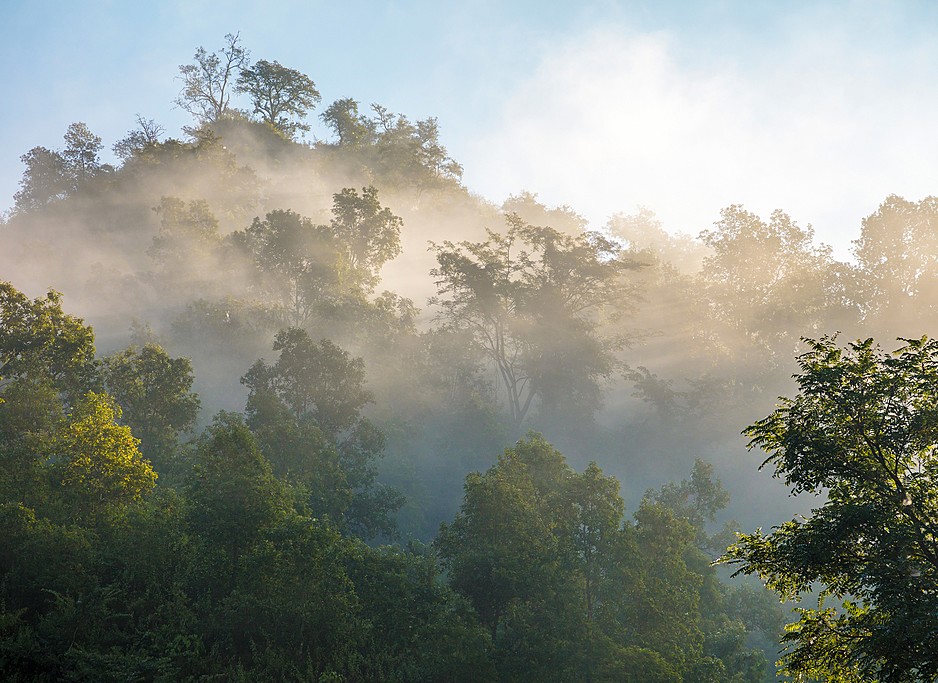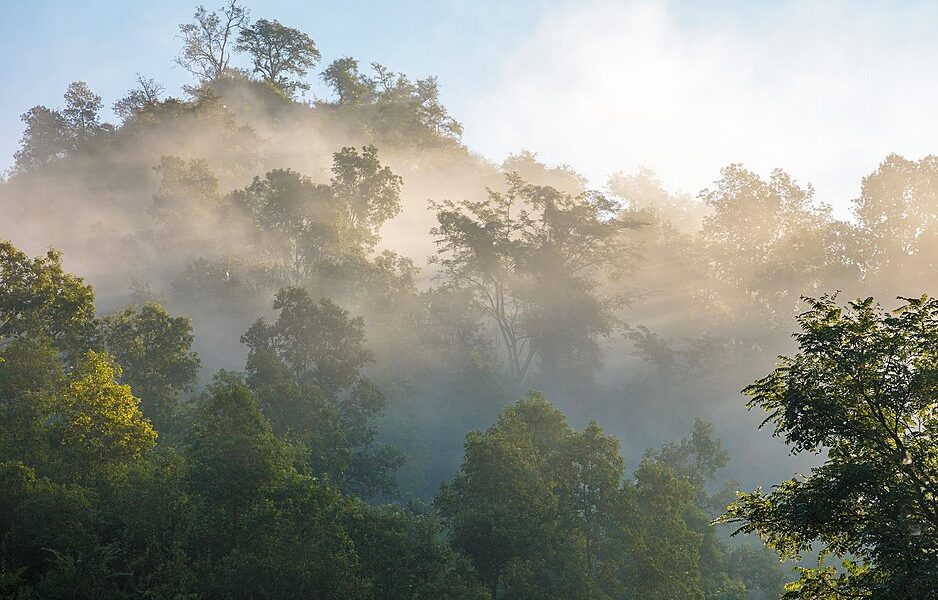
Starting around mid-June, peaking in July and August, and winding down in early September, the monsoon brings rain, humidity and an increase in temperatures across most of Nepal. True — mountain views are often obscured by cloud, temperatures get uncomfortable, it rains daily, and yes, there are leeches. But this is still a great time to trek and here are our best tips for going about it.
## Expert Tips for Trekking in Nepal During the Monsoon Season
Here are some essential pieces of advice to consider when planning your trek in Nepal during the monsoon season. These insights will help you navigate the unique challenges and rewards of exploring this beautiful country during this time of year.
* When embarking on your trek, aim to drive as far as possible to strategically position yourself behind the imposing mountains. This can offer some shelter from the weather and provide a head start on your journey.
* As you conclude your trek, it is highly recommended to allocate a two-day buffer period before your scheduled departure flight. This will provide you with flexibility in case of unforeseen delays due to weather conditions or other logistical challenges.
* For trekking in lower, warmer elevations, an umbrella proves to be an extremely useful companion. It provides ample protection from the rain and is often more comfortable than a heavy rain jacket in the humid climate.
* When ascending to higher elevations, a breathable waterproof shell is absolutely essential. This will safeguard you from the rain and wind while allowing moisture to escape, keeping you dry and comfortable throughout your trek.
* It is highly advisable to start your day early. Rainfall is most common in the afternoons, so setting off early maximizes your chances of experiencing clear skies and optimal trekking conditions.
* If it rained during the night, you can expect the morning to be clear, providing the most fantastic and rewarding views of the surrounding landscapes.
## Overview of Monsoon Trekking in Nepal
From the middle of June to the early part of September, Nepal’s monsoon season unfolds, presenting a surprisingly ideal window for trekking in the more remote and sheltered regions of the country. Areas like Mustang and Dolpo become particularly appealing during this time, alongside other regions enjoying the benefits of the rain shadow effect. The cultural trek is particularly rewarding during this time.
Moreover, the monsoon season caters perfectly to those who appreciate having the trails largely to themselves. Nepal’s most popular treks experience a significant reduction in crowds during this period, offering a more solitary and immersive experience. However, you should be aware that lower altitude forested areas are home to leeches. It is also crucial to maintain flexibility in your travel plans, as weather-related disruptions can be more frequent during this time.
Are you curious about which treks are most suitable for undertaking during the monsoon season? Look no further than our list of the best monsoon treks in Nepal.
## Annual Rainfall Patterns in Nepal
[Image of Chart Showing Annual Precipitation in Nepal]
Chart showing annual precipitation in Nepal.
## Monsoon Tips for the Annapurna Region
If your flight experiences a delay departing from Jomsom, you have the option of utilizing ground transport to reach Beni with relative ease. However, it’s worth noting that you may need to change vehicles a few times along the way. There are two points along the route, situated between Tatopani and Galeswhor, where road blockages can occasionally occur. However, repairs are usually carried out swiftly due to the high tourist season for Indian pilgrims visiting Muktinath.
## Monsoon Tips for the Everest Region
Even when venturing into the higher elevations of the Everest region, the levels of precipitation are noticeably lower compared to the lower-lying areas of Nepal. The monsoon season can be a surprisingly advantageous time to explore Everest, offering a chance to avoid the usual throngs of trekkers commonly found on one of Nepal’s busiest trekking routes. That said, you must be aware that flights to and from Lukla are commonly delayed, so make sure to build in a two-day buffer before and after your trek to manage this circumstance.
## What to Expect During a Monsoon Trek
During your monsoon trek, you should anticipate approximately 3-4 hours of rain each day, typically occurring around the same time. When trekking through forests and at lower altitudes, a build-up of dense fog and clouds is common, which may intermittently clear to reveal the breathtaking views that lie beyond.
## Recommended Gear for Monsoon Trekking
For the lower elevations, an umbrella emerges as the most practical choice, given that even the highest-quality waterproof shells can become uncomfortably hot and stuffy in the humid conditions. Clothing that is lightweight and quick-drying is highly recommended, considering the consistently high humidity levels. As you ascend to higher elevations, the humidity tends to decrease, and temperatures become significantly more agreeable. However, rainfall remains a possibility, so a waterproof shell is still a necessary item in your trekking gear.
## Transport Considerations During the Monsoon Season
The main challenge you might encounter when trekking during the monsoon season is getting to your chosen trailhead. Poor visibility can cause flight delays, and roads can become excessively muddy or, in more severe cases, blocked due to landslides. However, there is still a strong chance that your flight will proceed as scheduled. It’s always wise to inquire in advance to confirm the road conditions and any potential closures.
Nonetheless, it is still prudent to incorporate potential transport delays into your itinerary and provide yourself with a safety buffer to minimize any potential complications. Flight schedules are often subject to delays, and road transport can be disrupted by landslides occurring along Nepal’s main highways.
## Special Thanks
We extend our sincere gratitude to our local Nepal expert, Mads Mathiasen, for his valuable insights and tips contributed during the preparation of this article.
B-1762

